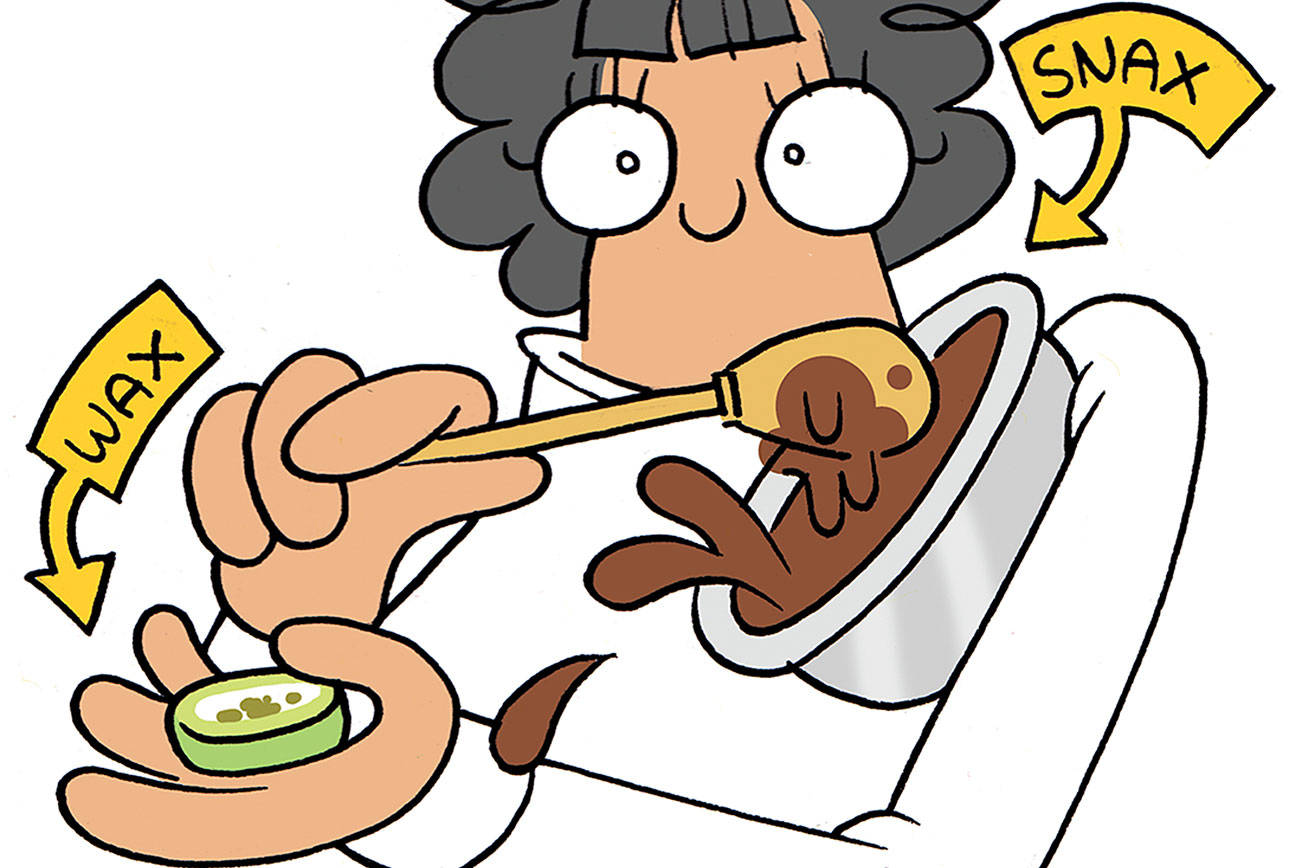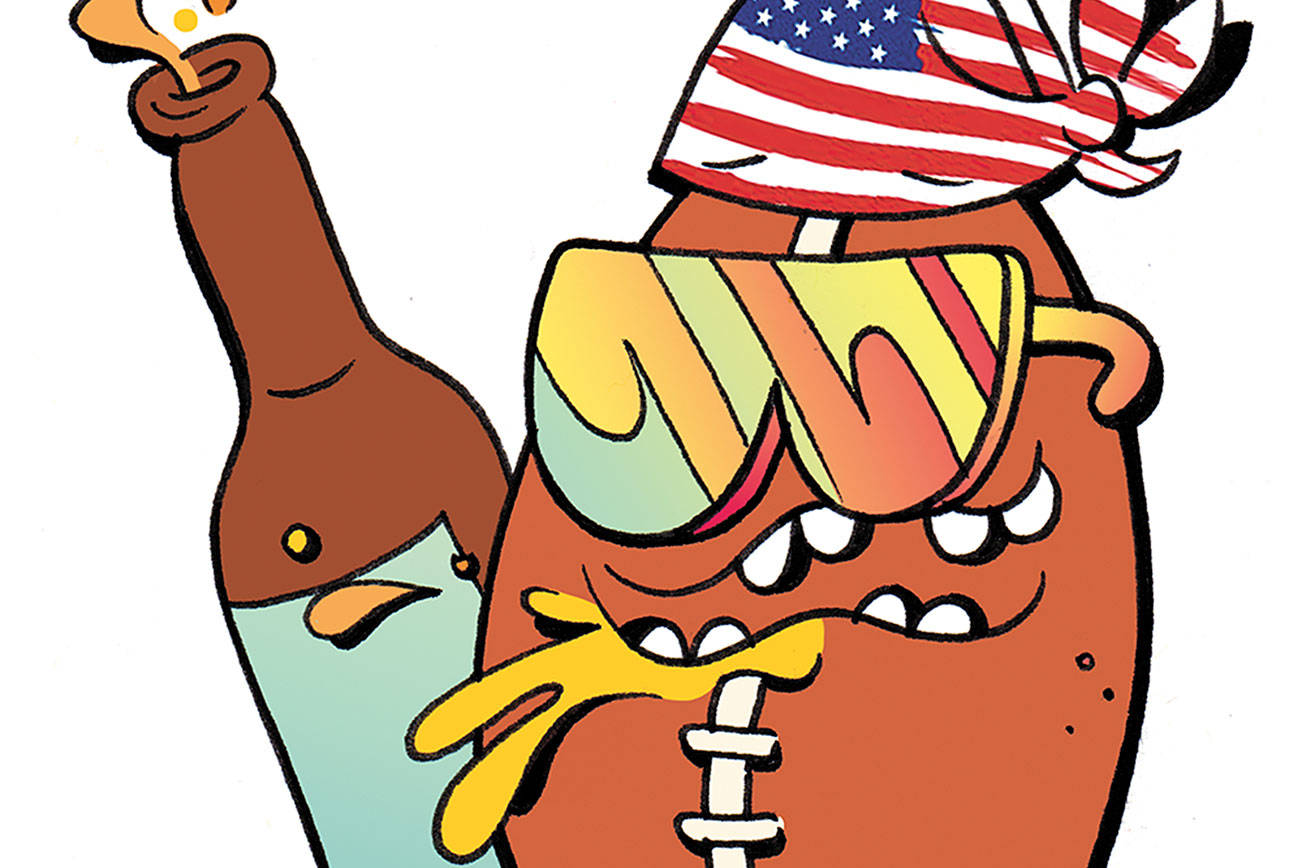I’m predicting that this fall and winter season is going to be hard for people whether they like it hot or cold, and weed can help.
Usually I would save a piece discussing Seasonal Affective Disorder (SAD) for later in the year as we head into winter, but let’s face it: Thanks to weeks on weeks of wildfire smoke, we got robbed of our summer this year. With fall only a week away, some folks are already feeling the seasonal contraction as the days grow shorter and colder. Conversely, for those of us who love the dark half of the year—those classic, spooky Pacific Northwest winters—weather forecasters are unfortunately prognosticating an El Niño weather pattern, which will bring warmer-than-usual temperatures.
First, let’s talk about Seasonal Affective Disorder. When we expose our eyes to sunlight, our brain releases serotonin, a hormone that motivates us to get up and do things, but can also boost our happiness. When we expose our eyes to darkness, our brains release melatonin, a hormone that makes us drowsy and sometimes depressed. In winter, many people experience a drop in serotonin production and a rise in melatonin production, a condition called Seasonal Affective Disorder, or SAD. This can manifest itself as depression, a loss of energy or fatigue, a diminished ability to concentrate, disturbances in appetite and sleep patterns, and other symptoms.
But all is not lost. An interesting research paper came out of UW’s Alcohol and Drug Abuse Institute last year: “Effects of Marijuana on Mental Health” by Susan Stoner. (I can’t make this stuff up, people.) Published in Neuropharmacology, the paper detailed the use of THC and CBD to fight depression. And while Stoner ultimately defined cannabis as “associated with the development of substance-use disorder,” two essential elements did come to the surface. Stoner reported from her findings that, while a woefully small amount of testing has been done on the topic, a slight majority of medicinal-marijuana patients were using cannabis to treat various forms of depression, and that some marijuana users “with or prone to depression do appear to derive some benefit from using marijuana.” Further, Stoner noted that CBD in particular “induces rapid-acting antidepressant-like effects.”
The world-famous sativa Charlotte’s Web or a hybrid like ACDC will provide generous amounts of CBD with almost no THC, allowing for all the benefits of an antidepressant without getting stoned. If you do want to get high, sativas like Harlequin, MediHaze, and Dance World or hybrids like Blueberry Essence and Sour Tsunami all provide uplifting, inspirational, motivational highs perfect for improvised dance parties in the living room or art jams with friends. For those who experience insomnia, indicas like Critical Mass and Stephen Hawking Kush are super-chill-inducing leisure strains.
But ingesting weed isn’t the only way to derive mood-elevating effects from it. Light therapy is a classic treatment for SAD, and you’ll get plenty of exposure to it growing your own weed. Many grow lights used for cannabis production are ultra-bright and in the same spectrum of blue-white light that the sun provides—just what our body needs to trigger serotonin production. Moreover, the act of growing and caring for something, and watching the fruit of your labor reveal itself over the seasons, can be quite inspirational and a source of happiness and satisfaction in its own right.
Last but not least, while weed is wonderful, it is not a cure-all. If you are feeling depressed, talk to someone.
stashbox@seattleweekly.com
—
UPDATE
To the editor,
In discussing the possible role of cannabis in seasonal affective disorder (SAD), Meagan Angus referred to a research brief titled “Effects of Marijuana on Mental Health: Depression” that I published on the website www.learnaboutmarijuanawa.org. The website, comprising a trove of science-based information for the public, is curated by the University of Washington Alcohol and Drug Abuse Institute, where I am a research consultant. I am also a licensed clinical psychologist, so it is very important to me that accurate information about drugs and mental health be disseminated to the public.
Ms. Angus mischaracterized my work in several ways that I would like to correct. First, please note that my article was a brief research review; I did not conduct original research in this area. Second, it was not published in the Journal of Neuropharmacology; I have never submitted a paper there. Third, the article did not address SAD, which may differ from other forms of depression in terms of what treatments work. Fourth, and most importantly, nowhere in my article did I say that CBD in particular “induces rapid-acting antidepressant-like effects.” To my knowledge, there are no human studies to support such a claim. As I state in my article, “THC and CBD appear to have antidepressant-like effects in animal models at certain doses but not others.” I also note that “some evidence suggests that reductions in marijuana use by those with depression may actually reduce depressive symptoms.” In general, it is difficult to say what effects marijuana might have on mental health in general and depression in particular because there is a dearth of research on marijuana use in humans that evaluates the effects of the range of products available in the legalized marketplace and the range of individual differences among persons who use those products.
While your favorite bud tender may be a good source of anecdotal knowledge (and perhaps personal experience), as scientists say, “the plural of anecdote is not data,” and consumers should always bear in mind, “your mileage may vary.”
Sincerely,
Susan Stoner, Ph.D.
Research Consultant
Alcohol and Drug Abuse Institute
University of Washington







